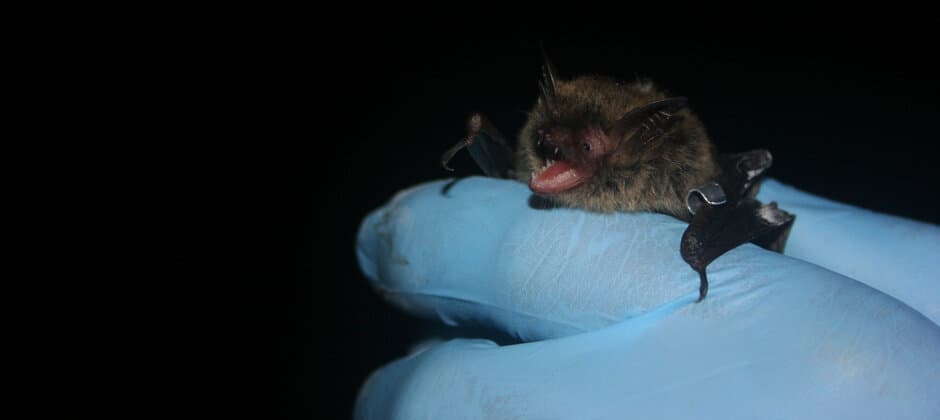Share this article
USFWS proposes listing northern long-eared bats as endangered
Citing the escalation of white-nose syndrome, the U.S. Fish and Wildlife Service is proposing to reclassify the threatened northern long-eared bat (Myotis septentrionalis) as endangered under the Endangered Species Act.
The northern long-eared bat, a cave-dwelling species found throughout 37 U.S. states and all Canadian provinces, was originally listed as endangered in Canada under the Species at Risk Act in 2014, and threatened in the U.S. under the Endangered Species Act in 2015.
White-nose syndrome, a devastating fungal disease spread among hibernating bats, is one of the main threats to the species’ survival is. Since the bat’s 2015 ESA listing, white-nose syndrome, which has a 90-100% mortality rate, has spread across 80% of the northern long-eared bat’s range and drastically reduced their populations.
The USFWS’ proposal to reclassify the northern long-eared bat as endangered stems from a 2020 court order requiring a review of the 2015 threatened species listing and accompanying 4(d) rule, which outlines the protective regulations for the species under the ESA. After an in-depth review, the USFWS found the fungal disease is expected to affect 100% of the northern long-eared bat’s U.S. range by 2025, a rate of spread far quicker than initially anticipated.
In addition to white-nose syndrome, the species faces pressure from wind turbine collisions, habitat loss and climate change. If the species is reclassified as endangered, certain actions that result in take of the species that are currently exempted by the 4(d) rule accompanying the threatened species listing would no longer be permitted. This includes removal of the bat from human structures and incidentally removing bat-inhabited trees during logging operations.
The USFWS is holding a virtual information session followed by a public hearing about the northern long-eared bat on Apr. 7. Interested parties may register and comment on the proposal at the public hearing, or submit written comments to USFWS by May 23, 2022.
Read TWS’ standing position on wildlife disease.
Header Image: A wildlife professional, wearing gloves to reduce the spread of white-nose syndrome, holds a northern long-eared bat. Credit: Keith Shannon/USFWS








